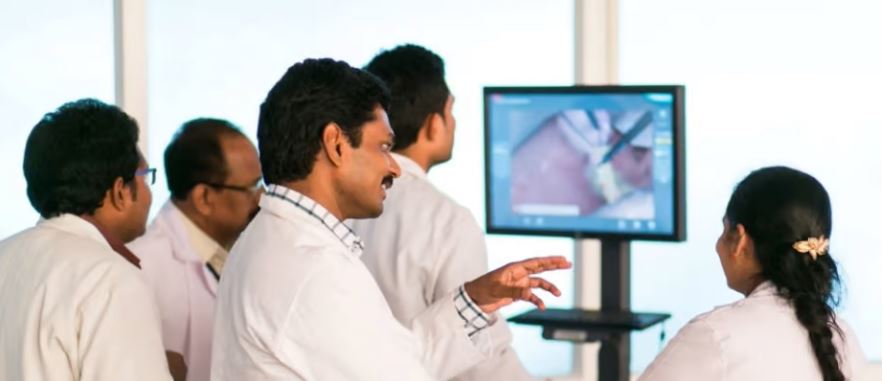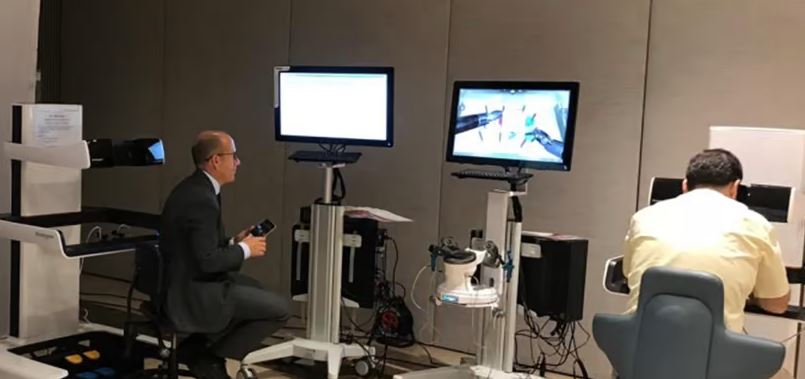Customer Company Size
SME
Region
- America
Country
- United States
Product
- Patronus App
- Bandwidth API Platform
Tech Stack
- GPS Technology
- Voice and Messaging API
Implementation Scale
- Enterprise-wide Deployment
Impact Metrics
- Customer Satisfaction
- Brand Awareness
Technology Category
- Application Infrastructure & Middleware - API Integration & Management
Applicable Industries
- Education
Use Cases
- Public Warning & Emergency Response
- Real-Time Location System (RTLS)
Services
- Software Design & Engineering Services
About The Customer
Patronus is an everyday safety service that provides enhanced emergency calling on college campuses. The company leverages the ubiquity of mobile phones among students to offer a simple yet powerful app that allows users to get in touch with the nearest authorities more quickly than ever before. The app uses GPS technology to transmit the caller’s location and can also notify friends or loved ones when the user is 'on their way', keeping everyone updated throughout the travel episode. Founded in 2013, Patronus has grown its reach and is now on 80 campuses nationwide, with requests from 450 additional campuses across the country.
The Challenge
Patronus was founded in 2013 with the aim of modernizing the way students access emergency help on college campuses. The company believed that the existing standards, which included blue call boxes and running to the nearest landline phone, were outdated considering the ubiquity of mobile phones. After a year of product development and user testing, Patronus was in search of a voice and messaging API partner that could help it evolve with future versions of the application. The company wanted a platform provider that would help tackle challenges as they arose and could scale for what was poised to be a significant growth story.
The Solution
In 2014, Patronus approached Bandwidth for help in enabling voice calling in the latest version of its application. Bandwidth offered access to a large inventory of local phone numbers across the continental United States, readily available whenever a user needed to make a call. It was also the only provider in the market with both an easy-to-use voice and messaging API platform and control and ownership of the underlying carrier network. This meant a level of high-touch support that was unmatched among platform providers. As challenges arose or the Patronus developers hit a critical decision point, the Bandwidth team was right there working to figure out next steps together. At one point during testing, the Patronus team found that certain calls were not going through as planned. Instead of spending multiple days going back and forth with service tickets, emails and 'trial and error' solutions, the Bandwidth team got on the phone with Patronus and spent 36 hours in constant communication with multiple resources involved—until the team worked out the bug together.
Operational Impact
Quantitative Benefit

Case Study missing?
Start adding your own!
Register with your work email and create a new case study profile for your business.
Related Case Studies.

Case Study
Revolutionizing Medical Training in India: GSL Smart Lab and the LAP Mentor
The GSL SMART Lab, a collective effort of the GSL College of Medicine and the GSL College of Nursing and Health Science, was facing a challenge in providing superior training to healthcare professionals. As clinical medicine was becoming more focused on patient safety and quality of care, the need for medical simulation to bridge the educational gap between the classroom and the clinical environment was becoming increasingly apparent. Dr. Sandeep Ganni, the director of the GSL SMART Lab, envisioned a world-class surgical and medical training center where physicians and healthcare professionals could learn skills through simulation training. He was looking for different simulators for different specialties to provide both basic and advanced simulation training. For laparoscopic surgery, he was interested in a high fidelity simulator that could provide basic surgical and suturing skills training for international accreditation as well as specific hands-on training in complex laparoscopic procedures for practicing physicians in India.

Case Study
IoT platform Enables Safety Solutions for U.S. School Districts
Designed to alert drivers when schoolchildren are present, especially in low-visibility conditions, school-zone flasher signals are typically updated manually at each school. The switching is based on the school calendar and manually changed when an unexpected early dismissal occurs, as in the case of a weather-event altering the normal schedule. The process to reprogram the flashers requires a significant effort by school district personnel to implement due to the large number of warning flashers installed across an entire school district.

Case Study
Implementing Robotic Surgery Training Simulator for Enhanced Surgical Proficiency
Fundacio Puigvert, a leading European medical center specializing in Urology, Nephrology, and Andrology, faced a significant challenge in training its surgical residents. The institution recognized the need for a more standardized and comprehensive training curriculum, particularly in the area of robotic surgery. The challenge was underscored by two independent studies showing that less than 5% of residents in Italian and German residency programs could perform major or complex procedures by the end of their residency. The institution sought to establish a virtual reality simulation lab that would include endourological, laparoscopic, and robotic platforms. However, they needed a simulator that could replicate both the hardware and software of the robotic Da Vinci console used in the operating room, without being connected to the actual physical console. They also required a system that could provide both basic and advanced simulation training, and a metrics system to assess the proficiency of the trainees before they performed surgical procedures in the operating theater.

Case Study
Edinburgh Napier University streamlines long-distance learning with Cisco WebEX
• Geographically dispersed campus made in-person meetings costly and inconvenient.• Distance-learning programs in Malaysia, India, and China required dependable, user-friendly online tools to maximize interaction in collaborative workspaces.• Virtual learning environment required a separate sign-in process, resulting in a significant administrative burden for IT staff and limited adoption of collaboration technology.

Case Study
8x increased productivity with VKS
Before VKS, a teacher would spend a lot of time showing a group of 22 students how to build a set of stairs within a semester of 120 hours. Along with not leaving the teacher much time to provide one-on-one support for each student to properly learn carpentry, it also left a considerable amount of room for error. Key information would be misinterpreted or lost as the class was taught in the typical show-and-tell way.

Case Study
Scalable IoT Empowering GreenFlex's Sustainable Growth
GreenFlex, a company that supports sustainable development, decarbonization, and energy efficiency, faced several challenges in its quest to expand its business. The company needed to deploy a robust and sustainable IoT technology to support its growth. It was crucial for them to monitor and control devices at customer sites in a safe and reliable manner. They also needed to integrate devices across a range of communication protocols and gather and act on data to meet efficiency targets. GreenFlex had previously built IoT capabilities into its digital platform, GreenFlexIQ, to monitor and manage customer sites remotely. However, they soon realized that they needed a new platform to support their ambitions. They needed a platform that could scale to connect more devices for production management and make it easier for the operations team to manage devices in the field.







